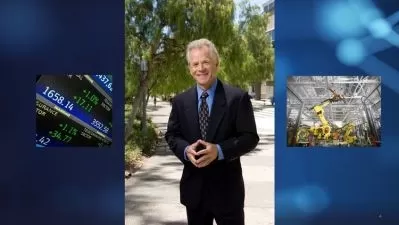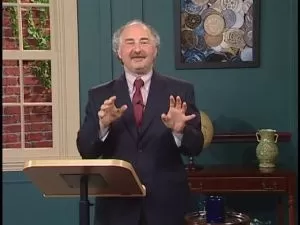Crashes and Crises: Lessons from a History of Financial Disasters
Connel Fullenkamp
11:34:52
Description
Banks fail. Stocks plummet. Nations default. According to World Bank economist Gerard Caprio, we are now living in a “boom in busts.” From cryptocurrency to China's shadow banks, we must ask: What will bring the next disaster?
As you look towards the future, consider these cautionary tales from the past:
• Tulip Bubble: Tulip bulbs were prized assets in 17th-century Holland. But pricing lost all touch with reality when speculation in bulb futures became a substitute for the outlawed vice of gambling, driving up prices by thirty-fold in a matter of weeks, before the inevitable crash. The bubble was fueled by easy credit and lax regulation.
• 1929 Stock Market Crash: Considered a bolt out of the blue by many, the plunge in stock prices in the fall of 1929 was foreshadowed by worrisome trends in the months leading up to the collapse. For example, at the height of the bull market, only about one-third of all New York Stock Exchange listings were rising. Half were already falling!
• Derivative Debacle: Called “financial weapons of mass destruction” by billionaire Warren Buffet, derivatives can be safe and useful in the right hands. Unfortunately, that was not the case when Bankers Trust wrote derivative contracts for some of its major clients in the mid-1990s, putting one firm $200 million in the hole.
Exploring these and other intriguing cases in detail, Crashes and Crises: Lessons from a History of Financial Disasters sheds light on the volatile market of today by looking at mistakes made in risk-taking throughout history. In 24 half-hour lectures that are both gripping and instructive, Professor Connel Fullenkamp of Duke University shares some of the greatest stories of misfortune and malfeasance in history. Full of drama and consequences, these stories open a window into not just financial markets and money-making schemes, but also into our own human tendency to look for quick fixes and easy money.
Monetary Mysteries Cleared Up
An acclaimed economist and award-winning teacher, Professor Fullenkamp has a gift for making the most obscure financial concepts understandable. For example, cryptocurrency is probably near the top of anyone's list of monetary mysteries. In the very first lecture, Dr. Fullenkamp puts this form of fiat money under the microscope to dissect its purpose, utility for certain kinds of transactions, and inherent risks. While cryptocurrency fills legitimate needs, its novelty and dependence on computer algorithms—not to mention its attractiveness to criminals—make it a very high-risk financial instrument.
In this course, you also investigate a host of other financial phenomena, including these:
• Ponzi Schemes: This popular form of fraud existed even before Charles Ponzi gave it a name in his spectacular swindling scheme in the 1920s. Ponzi schemes rely on investors lured by the promise of high returns, with generous payouts at the outset to make the “business” look legitimate—and irresistible. The scam usually collapses as soon as serious suspicions are aroused.
• Financial Panics: Once common, panics were typically sparked by a liquidity crisis, when a bank or business ran out of cash, causing panic among depositors or creditors that spread throughout the financial system. Economically ruinous, panics found a cure in the United States only with the adoption of the Federal Reserve System in 1913, followed by deposit insurance and new banking regulations.
• Subprime Debt: Mortgage lending to riskier borrowers—called subprime debt—seemed like a good bet in the booming U.S. real estate market in the early 21st century. Unfortunately, innovative financial instruments hid the enormous potential for catastrophe, which began to unfold when borrowers started defaulting in large numbers. The Great Recession of 2007-2009 was the result.
Professor Fullenkamp is candid about the role of economists in some of the disasters. For instance, the subprime mortgage crisis was preceded by several years of what experts called a “Goldilocks economy,” when the United States was enjoying economic growth that wasn't too hot or too cold, not too fast or too slow, but just right. Economists concluded that, thanks to their wise counsel, the economy was fine-tuned to near perfection. They didn't look for alternative explanations and thus missed the role of globalization, loose monetary policy, and lax regulation in keeping the U.S. financial system purring happily along. In fact, the economy was like a car that appears to be running nicely, but has fatal flaws that could send it careering into a ditch—which is exactly what happened with the 2007–2009 recession.
Ignorance + Overconfidence = Calamity
Crashes and Crises covers other cases where governments seemed to be following a sensible policy, but pursued it to a calamitous conclusion—as with the hyperinflation that embroiled Germany in the aftermath of World War I. That problem had its beginnings in the widely accepted view that the war would be short and could be financed by borrowing, without raising taxes. And you learn about the misguided investments of Robert Citron, the treasurer of Orange County, California, in the 1990s, who started out profitably enough, but drove the county into the largest-ever U.S. municipal bankruptcy at the time by getting involved with repurchase agreements and inverse floater bonds, which he didn't understand.
The calamitous mix of ignorance and overconfidence is one of the major themes of these lectures. You may not be responsible for a multi-billion-dollar portfolio—as some of the rogue traders profiled in the course were—but your investments can still end as badly as those of Wall Street pros who thought they knew what they were doing but didn't.
The Good Old Days
In a fascinating analysis, Professor Fullenkamp explains how we got into our present nerve-wracking era. Anyone who remembers the 1950s and early '60s may feel nostalgia for the calm and predictable financial markets of that time, when the joke was that bankers followed the “3-6-3 rule”: borrow at three percent, lend at six percent, and be on the golf course by three o'clock. Bank failures were rare during this period, interest rates were low, and stock prices were on a steady rise. But the situation was far from normal, since the country was living through the aftereffects of the Great Depression and World War II, with stringent banking rules designed to prevent another depression and booming U.S. exports due to demand from war-ravaged nations that were rebuilding. It was a convergence of circumstances that could not last—and didn't.
Crashes and Crises recounts the macroeconomic factors that tipped the United States along with the rest of the world into the current unpredictable and sometimes chaotic state. Professor Fullenkamp notes that this situation is really “back to the future,” since the global economy is now closer to the norm that has prevailed throughout history.
Taking this course can help you be prepared for the next inevitable financial disaster. While some misfortunes will always affect the larger economy, a better understanding of their causes could mean the difference between being a spectator and being a victim.
More details
User Reviews
Rating
Connel Fullenkamp
Instructor's CoursesProfessor Connel Fullenkamp is Professor of the Practice and Director of Undergraduate Studies in the Department of Economics at Duke University. He teaches financial economics courses, such as corporate finance, as well as core courses, such as economic principles. In addition to teaching, he serves as a consultant for the Duke Center for International Development. Prior to joining the Duke faculty in 1999, Professor Fullenkamp was a faculty member in the Department of Finance within the Mendoza College of Business at the University of Notre Dame. Originally from Sioux Falls, South Dakota, Professor Fullenkamp earned his undergraduate degree in Economics from Michigan State University. In addition to receiving the Harry S. Truman Scholarship, he was named one of the university's Alumni Distinguished Scholars. He earned his master's and doctorate degrees in Economics from Harvard University, where he was also awarded a National Science Foundation Graduate Research Fellowship. Professor Fullenkamp's areas of interest include financial market development and regulation, economic policy, and immigrant remittances. His work has appeared in a number of prestigious academic journals, including the Review of Economic Dynamics, The Cato Journal, and the Journal of Banking and Finance. He also does consulting work for the IMF Institute at the International Monetary Fund, training government officials around the world. He is a member of the IMF Institute's finance team, whose purpose is to train central bankers and other officials in financial market regulation, focusing on derivatives and other new financial instruments. In recognition of his teaching excellence, Professor Fullenkamp has received Duke University's Alumni Distinguished Undergraduate Teaching Award as well as the University of Notre Dame's Mendoza College of Business Outstanding Teacher Award. Along with Sunil Sharma, Professor Fullenkamp won the third annual ICFR-Financial Times Research Prize for their paper on international financial regulation.

The Great Courses
View courses The Great Courses- language english
- Training sessions 24
- duration 11:34:52
- English subtitles has
- Release Date 2023/06/07


















